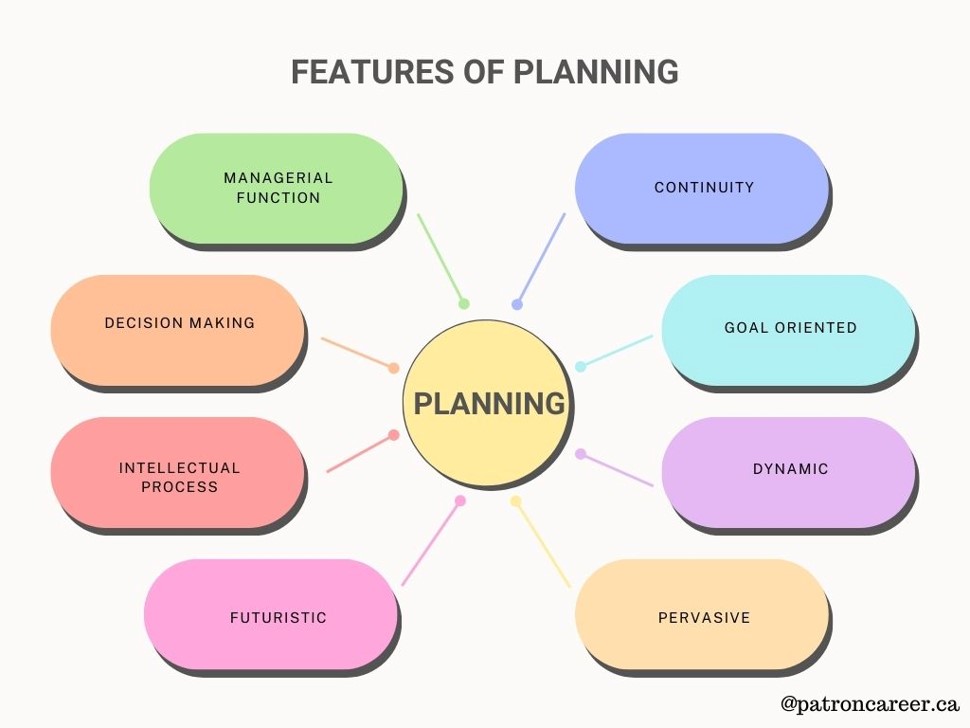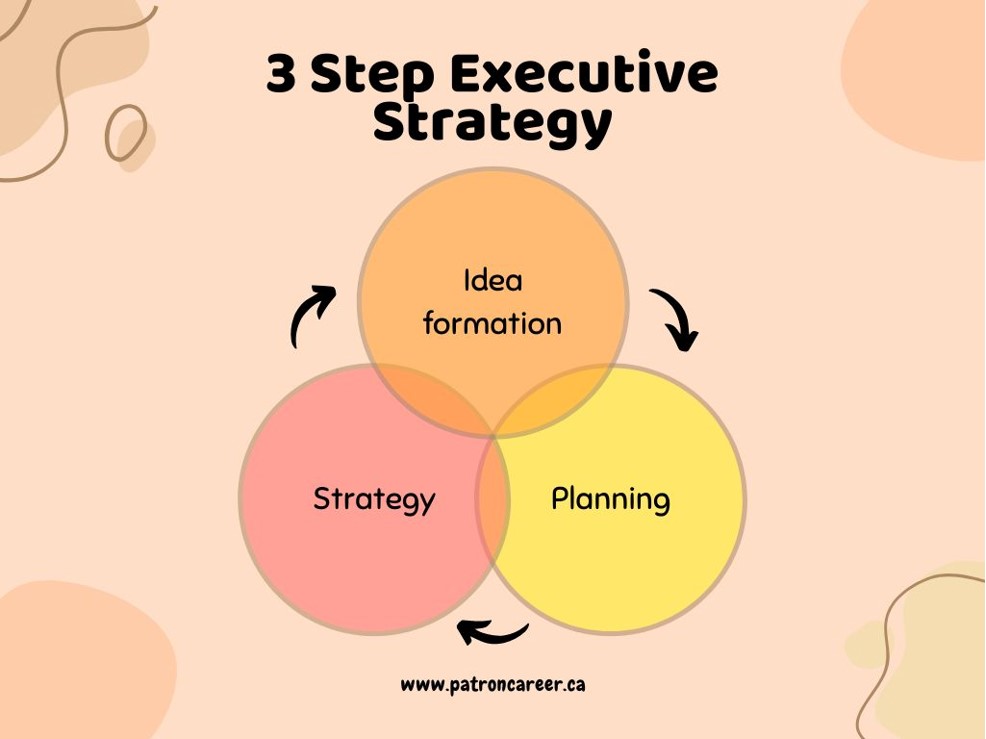
Quiet Quitting
08 August, 2023
Patron Career Staffing firmly believes in adopting a tailored approach to meet temporary and permanent recruitment needs. We safeguard the interest of our clients by finding such workers who are knowledgeable and reliable.
About UsNeed help? Make a Call
32 Dundas Street East Unit A, L5A1W2

Abstract: Effective planning is essential for business success. Let’s delve into the significance, purpose, and types of planning in business operations. It explores the various dimensions of planning and highlights its indispensable role in achieving organizational goals. By providing insights into the need for comprehensive planning and a guide to successful implementation, this article equips entrepreneurs with the tools to steer the dynamic business landscape in Canada.
A company that strategically plans its business endeavours is never set for failure, and that’s true in the managerial arena. In the intricacies of business management, planning emerges as the vital tool that drives efficiency and growth around a business. Whether it's a startup or an established middle or big enterprise, the ability to curate a clear passage towards the achievement of organizational goals is crucial. Planning empowers workplaces in Canada to adapt, grow, and thrive in a dynamic market. In this article, we will be dealing with:
As a bonus, we'll also share an easy step-by-step guide to acknowledge how to make an effective business plan.
Planning in Business
At its core, planning may vary from one business to another. In the simplest form business planning refers to the systematic process of outlining goals, devising strategies, and allocating resources to achieve predetermined objectives- all this is performed by the upper management. It encompasses a wide array of activities, ranging from forecasting and decision-making to risk assessment and resource allocation. In essence, planning sets the direction for the entire business endeavour, providing a roadmap to navigate challenges and seize opportunities.
Effective planning requires the management to portray a deep understanding of the business's internal strengths and weaknesses, as well as the external opportunities and threats present in the market. By this, we intend that all companies must perform a SWOT analysis to be able to understand the likeliness of the business plan to succeed or fail. By assessing these factors, businesses can make informed decisions that lead to their sustainable growth and competitive advantage.

Types of Planning
Planning in every business is crucial but it is not a one-size-fits-all concept. Let’s explore the different types of business plans that are common to all businesses:
1. Strategic Planning: This plan involves high-level, long-term planning that defines a company's mission, vision, and predominant goals. It sets the stage for tactical decisions and resource allocation.

At the highest level, strategic planning sets the overall tone for the entire business functioning and its day-to-day operations. It involves defining the company's mission, vision, and core values which is majorly done using the SWOT analysis technique. Through strategic planning, businesses in Canada can determine their long-term goals and the best approaches to achieve them. This type of planning ensures that all operational efforts align with the company's overarching vision.
2. Tactical Planning: As the name itself suggests, tactical planning involves using gimmicks and tactics to convert strategic goals into specific actions and projects. Tactical planning often focuses on short to medium-term actions. It outlines how strategic goals will be achieved through specific projects and initiatives.
It focuses on the short to medium-term and outlines the steps needed to achieve the broader objectives. For instance, if a strategic goal is to increase market share, tactical planning might involve launching new product lines or expanding into new regions.
3. Operational Planning: It is the planning method that comes at the bottom of the hierarchy of types of planning, also known as an annual plan. This level of planning deals with day-to- day activities. It ensures that resources are efficiently utilized, processes are optimized, and tasks are executed smoothly.
Operational planning is concerned with the day-to-day activities required to run the business smoothly. It involves creating detailed plans for various departments, setting performance metrics, and ensuring that resources are allocated efficiently. This type of planning is crucial for maintaining the consistency and effectiveness of operations.

Why you need Comprehensive Planning?
Planning is not a luxury but a necessity. It can make or break a company or any business set-up. It helps organizations anticipate market shifts, technological advancements, and customer preferences. Through comprehensive planning, businesses can alleviate risks, seize future opportunities, gain competitive advantage and stay ahead of competitors. In a globally interconnected economy, Canadian businesses must plan strategically to remain competitive on the international stage.
With effective planning, businesses can proactively address potential risks and challenges, reducing the negative impacts of unforeseen circumstances. A company can effectively manage its resources by their proper allocation because resources are scarce and need proper utilization. By staying ahead of the curve, Canadian businesses can maintain relevance, adapt to new trends, and secure a strong market position both domestically and internationally.
Guide to Successful Planning in Businesses
Creating an effective planning process requires careful consideration and execution. Here's a step- by-step guide to successful planning:
1. Set Clear Goals: Well-defined goals provide direction and clarity to the entire organization. These goals should be specific, measurable, achievable, relevant, and time-bound (SMART).
2. Environmental Analysis: Understand your company's internal strengths and weaknesses. Additionally, conduct a thorough analysis of the external environment, considering factors such as market trends, competition, regulatory changes, and technological advancements.
3. Strategy Formulation: Based on the analysis, formulate strategies that align with your business's strengths and the opportunities present in the market. These strategies should outline how you'll achieve your goals step by step.
4. Resource Allocation: Allocate resources, including finances, human capital, and technology, in a way that supports your strategies effectively. This ensures that you have the necessary means to execute your plans.
5. Implementation: Execution is where planning truly comes to life. Involve relevant teams and stakeholders, communicate the strategies clearly, and monitor progress consistently. Regular meetings and updates help ensure everyone is on track.
6. Flexibility and Adaptation: The business landscape is dynamic, and plans may need adjustments. Being flexible and open to adapting your strategies based on changing circumstances is essential to staying relevant and competitive.
7. Continuous Evaluation: Regularly assess your progress against the set targets. This evaluation helps identify areas of improvement, success stories, and potential roadblocks. Make necessary adjustments based on the evaluation findings.
Lastly….
In the flurry to achieve heights in the Canadian business market, effective planning serves as a compass, guiding enterprises toward success. From strategic blueprints to operational roadmaps, planning simplifies all other functions for the management while also empowering businesses to weather challenges and capitalize on opportunities. By embracing comprehensive planning and following the guide to success, Canadian businesses can cultivate resilience, innovation, and long- term growth in a competitive global landscape.
Stay tuned for more!
